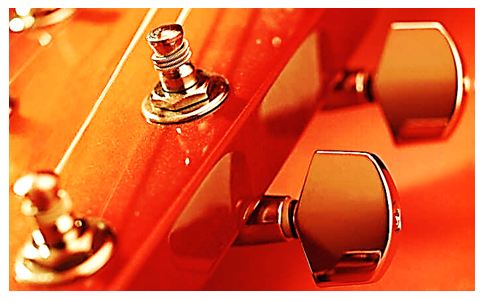Am I the only one in the world who thinks the motor-tuned $4,000 Firebird has the best guitar shape ever?
Maybe I am, but as far as robot guitars go, I was stunned by the $40,000 motor-free Antares prototype’s capabilities, but now it’s a Peavey for $495.
This article is all about why I believe advances in auto-tune guitar technology have more important implications that go way beyond auto-tuning.
Nobody else sees it.
No, I’m no longer talking about the Firebird X shape (why so many X-shape haters on YouTube? It’s just a guitar shape, man).
http://www.youtube.com/watch?v=rPwRcRiRHEc
I’m talking about the insanely flexible capabilities of the Antares ATG-6 (oops, sorry: it’s now the Peavey AT-200).
No, not the auto-tuning capability.
Personally, I don’t really care about auto tuning.
Here’s the reason why I don’t care about auto tuning on guitars:
It’s just that something at the back of my mind (and in that clip above) tells me that you could do much more creative stuff with the capabilities shown in the demo below.
It’s all because you can control the tuning as you play.
You set the tuning by playing a note or chord.
That seems to me to be something which opens up a world of limitless creativity.
Before I talk about my own ideas, here’s a demo of the Peavey (rather than the Antares prototype):
What about playing a note and somehow also being able to trigger a ‘virtual whammy bar action’? You could have it offer easily distinguishable virtual Bigsby, Strat or Jazzmaster trem options, no? What about setting it so that when you physically bend one string, it virtually simultaneously bends others, multi-bender style?
What about ‘some strings electric, some strings acoustic’?
The Antares algorithms are set to automatically ‘sweet-spot’ the pitch of each note fretted, eliminating certain kinds of ‘rough edges’ in your playing, but that means that there should be the facility to do this in reverse, and deliberately introduce subtle (or extreme, or even random) ‘roughnesses’, something which will no doubt help flawless virtuouso shredders like yours truly to seem more human (in answer to those cynics who hate the mere thought of having anything even remotely robotic on their guitars).
See if you can spot the deliberate error in that last paragraph.
And what about a ‘virtual e-bow’?
How about ‘modulated bending’ (you bend the physical string one way, the Peavey virtually bends it another, or you physically bend the string to one extent, it bends it more or less, or faster or slower, or multiple set times, or it does ‘virtual individual string vibrato’, note by note, so you don’t have to: why not be even more creative and program it to do a vibrato on, say, every third note?).
What about ‘four hands guitar’ played by one person? (I’m speculating that if you can perfectly simulate naturally modulated pitch on manually plucked strings, you should also be able to manually fret strings that have been ‘virtually plucked’.
http://www.youtube.com/watch?v=YPmc1AgVBAY
Long before the X became my favourite shape, I was into the not entirely dissimilar Italia Modena (a wondrously ‘non-reverse-Firebird-shaped’ glitter-finished beastie) played in this clip by Jimmy Agren, third brother of Frank Zappa‘s legendary Swedish drum and keyboard discoveries Mats and Morgan Agren.
Now can someone send me an X shaped body and neck (you are free to use an original) with an AT-200 electronics transplant, just for review purposes.
If you throw in a programmer to work on implementing all those new features I dreamt up above, I promise to send it back once I get to the end of the review, which may be quite some time later, because I will be very, very thorough.
By the way, Peavey is not the only guitar firm to incorporate the Antares Autotune system.
Parker has done the same kind of thing with their Autotune MaxxFly (it’s launch price is set at well over $7,000 but for that princely sum maybe you can convince your nearest guitar dealer to throw in a couple of spare AT-200s in case anything unfortunate happens).


